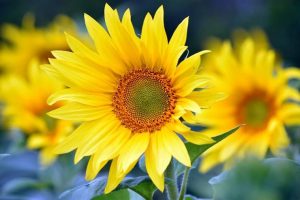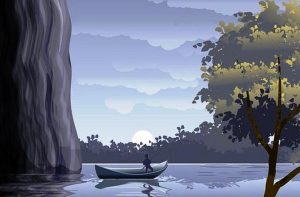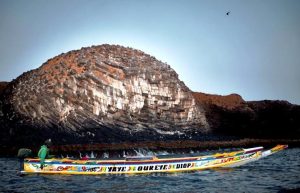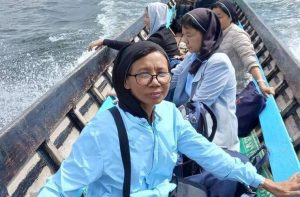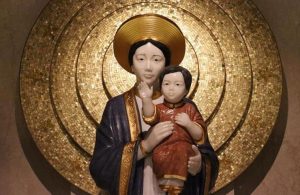Kathmandu is the capital and largest municipality of Nepal. There are a lot informal markets in the streets, where you can find everything you need. One of the main attractions is the medicine man who promises to cure everything… almost.
Not far from the railway station we met Shakya M. Aakar. He was talking to a man who was asking him for advice on various ailments. Shakya said to him: “Recovering from a fracture? Mix three to five grams of padam cham in water and take it three times a day. Dropping too much hair lately? Soak 50 grams of marhangi in one litre of soybean oil, and apply to the scalp daily”.
Shakya M. Aakar has been a medicine man for the past decade and a half. He used to be a teacher in his hometown in the western district of Rolpa, some 280 km west of Kathmandou, before moving to Butwal, in the south, to become a store assistant for the local government. It was there that he met his guru, and proceeded to formally study medicine for six months.
After selling herbal medicine in Butwal town for a few years, Shakya moved to Kathmandu. Today, he lives in the valley with his wife and two children, and produces his own branded product Himali Oil from his home laboratory. “It is good for head pains, nose blocks, and also burns and scalds”, explained the friendly medicine man. The milky substance, made from 17 secret ingredients, smells like strong ammonia. Taking a deep breath from the bottle threatens to knock a grown man out. Shakya then took out a bottle containing a fruit called putrajibi, which costs a few rupees for a mere 100 grams. Folklore has it that the dried fruit increases the chances of conceiving a boy. “I don’t really believe that it works,” Shakya confessed, “but it’s a popular medicine”.
A few shops down, Kana Mangal was reading the palms of a young man. Half of his stall was filled with locally produced bottles of Ayurvedic medicine, six types in all, said to deal with the most common ailments – jaundice, gonorrhoea, gastric pains, flu. The other half of his stall was filled with books on astrology, and some cards and calendars – the tools of his other trade as an astrologer. The worn, scraggly labels on his bottles explained in detail what each medicine does.
This is the world of alternative remedies. In a country in which health posts and hospitals may be a few days’ walk away, and very expensive, Nepalis have long developed a system of self-help cures – some rooted in time – tested by tradition and indigenous wisdom, others of more dubious origin. The world of alternative medicine has taken on a new level of salesmanship and showmanship.
Thapa Samir was rubbing a red oil onto his arm, causing a smouldering trail of smoke. As live scorpions climbed dangerously near his neck, he casually picked one up by the tail and put it back onto his shirt, then continued his relentless sale pitch. Such pitches can certainly be elaborate. One pamphlet cautions that, “Massaging with this oil in the daytime will produce smoke-like substances. Massaging at night will give an electricity-like glow”.
A few steps away, a boy was selling milky-coloured soap stones, which he claimed can cure anything from tonsillitis to gonorrhoea. In his non-stop sales pitch, he reassured potential clients that they could call a particular mobile number if anything went wrong. Such is the world of alternative medicine around the market in Kathmandu.
We moved to another market, just outside the Pashupatinath temple. In a small stall, Neupane Dev showed us the Pakhan Bed. This woody substance aids digestion, relieves bodily pains, and treats gall stones. It is to be taken three times a day, with three to six grams each serving, ground into powder and mixed with water. He then pointed to the chirayato. These unassuming twigs are used to counter high blood pressure, treat jaundice, headaches, bodily pains and even malaria. They are to be taken three times a day, with three to five grams per serving, ground into powder and mixed with water. If you instead have bone fracture, Neupane said the best remedy is the Lek Kha Pangra. This stony fruit is used to help in the recovery from bone fractures, as well as treating jaundice and mumps. After cracking open the hard shell, the white flesh can be cut up into four equal parts. This is to be taken three times a day, one part ground into powder and mixed with water each time. Padam Cham is also good for bone fractures. These yellowish dusty wooden blocks are used to aid the healing of bone fractures, relieve chest and bodily pains, and to clear the blood stream. They are to be taken two to three times a day, using three to five grams per serving, ground into powder and mixed into water.
Not far from the Neupane stall, we read a notice drawing attention to experienced doctor Koirala Mukunda. He smiled to us and invited us to see his products. He said that if someone suffers from low blood pressure he could give them the Asok Ghanda. This whitish twig is also a general tonic for strength and treating liver illnesses. It is to be taken three times a day, with two to three grams per serving, ground into powder and mixed with milk. But he is most famous for his Marhangi. This purplish branch with peeling bark is used as a cure for hairfall. 50 grams of the branches should be mixed into one litre of soybean oil, and the oil will then turn a red colour. It should be applied to the scalp every day.
Finally, we were shown the Kutki. These roots from high snowy peaks are used for treating snake bites and rabies. They can be applied directly to the wound or taken orally. They must be taken two to three times a day, with three grams per serving ground into powder and mixed with water.
Such is the world of alternative medicine in the streets of Kathmandu: take a leap of faith, some doubts and a good amount of money.

